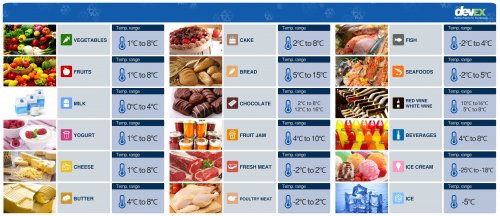It’s a good thing that prehistoric humans discovered the wonders of refrigeration, even without the understanding that bacteria cause food spoilage. They found that the food they have gathered tended to last longer when packed in snow or when placed in cooler caves. And so, they found a way to make sure that he had food during the leaner times.
As human civilization became more industrialized, “refrigeration” became a word. The late 19th century was a turning point as it was the advent of mechanical refrigeration, where a compressor with a refrigerant was used to preserve goods.
Bacteria exist everywhere – the air, the earth, the water, and the food we eat. They grow and multiply very fast in temperatures between 4 to 60 °C. Food-borne microorganisms grow much faster in the middle of that range between 21 and 47 °C. That’s where refrigeration comes in. A refrigerated device set at 4°C or below will protect most food as refrigeration slows down bacterial growth.
Refrigeration is essential to food safety. It is important to have refrigerated storage or refrigerated showcase units to protect your consumer from spoiled food products. Temperature display on these devices allows you to monitor the temperature where your food products are kept. Some products are fit for freezing, while others such as most fruits and vegetables are not. Freezing produce will affect their quality and so only chilling them is recommended. The optimal storage temperature will vary depending on the product, but generally a temperature below 4°C should be fine. Below is a quick summary infographic of food products and their optimal storage temperatures.



Comments are closed here.